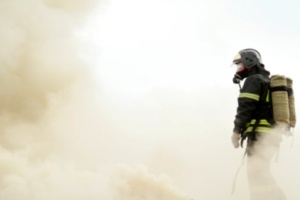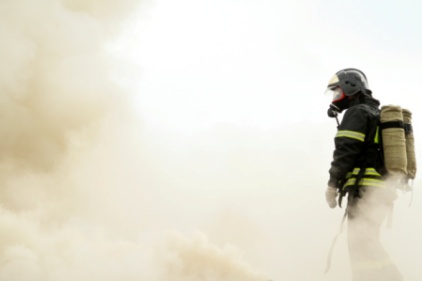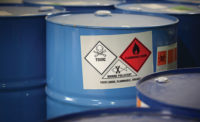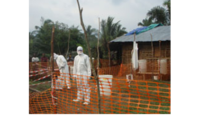 The International Association of Fire Fighters (IAFF) is conducting a comprehensive nationwide Hazardous Substance Training Program for fire fighters, paramedics and other emergency responders employed in 30,400 fire departments across the United States. (National Fire Protection Association (NFPA), U.S. Fire Department Profile through 2004, September 2005).
The International Association of Fire Fighters (IAFF) is conducting a comprehensive nationwide Hazardous Substance Training Program for fire fighters, paramedics and other emergency responders employed in 30,400 fire departments across the United States. (National Fire Protection Association (NFPA), U.S. Fire Department Profile through 2004, September 2005).
In 2004, 75,840 firefighter injuries occurred in the line of duty, a decrease of 3.7% from the year before. Fire fighter injuries constituted 36,880 or 48.6% of all injuries during fire-ground operations. An estimated 14,250 occurred during other on duty activities, while 13,150 occurred at non-fire emergency incidents (NFPA, U.S. Firefighter Injuries of 2004). In the course of their work, thousands more emergency responders are exposed to toxic materials that potentially increase their long-term risk for certain types of cancer, heart-lung damage, leukemia, and other diseases.
The International Association of Fire Fighters, headquartered in Washington, DC, represents more than 288,000 fire fighters and emergency medical personnel, who protect 85 percent of the nation's population. The IAFF includes more than 3,000 locals in more than 3,500 communities in the United States and Canada. Our training curricula are current, focused and ready to be delivered. This is a state-of-the-art program with a focused safety and health message provided by experienced, committed instructors.
This project is supported by NIOSH through a Training Project Grant which was renewed for five years in FY2008. The objectives of the program include:
- Conduct operation-level training events for the purpose of ensuring a safe and effective response to hazardous materials/weapons of mass destruction incidents by emergency response personnel.
- Conduct a continuing education conference to provide training for new instructors, updates for current instructors, and detailed education and exercise in recent program delivery developments.
- Ensure that the IAFF First Responder Operations program continues to meet or exceed applicable professional standards and incorporate lessons learned and best practices.
- Continue local customized training program delivery to meet the needs of emergency responders including fire and rescue departments, state fire training agencies, and offices of emergency management.
- Incorporate a comprehensive health and safety program for emergency responders using online resources to continue the learning process after formal training.
- Continue to employ marketing and outreach efforts to meet the needs of emergency responders in underserved populations.
- Maintain high program quality and efficiency through the implementation of an updated, fully integrated Quality Assurance effort.
- Using a range of program evaluation methods and analytical techniques identify, describe and disseminate information regarding the positive impacts-both short and long-term-of health and safety emergency responder training.
The IAFF training program strongly emphasizes its comprehensive project for fire fighters with a proven staff of professionals and nationally-acclaimed fire service instructors. The IAFF training project provides for at least 137 first responder courses every year the project is funded. As an integral part of these training deliveries, the IAFF's Recruit Training Initiative addresses basic health and safety training during recruit training in an effort to create a culture that prioritizes safety and prevent the development of unsafe practices. This training activity is supported by curricula development, continuing education for field instructors, ongoing development of digital and web-based learning methodologies and a comprehensive evaluation plan to track student, course, and institutional changes.
Contact Information: Patrick J. Morrison, Principal Investigator, International Association of Firefighters, 1750 New York Avenue, NW, Washington, DC 20006; Email: pmorrison@iaff.org



